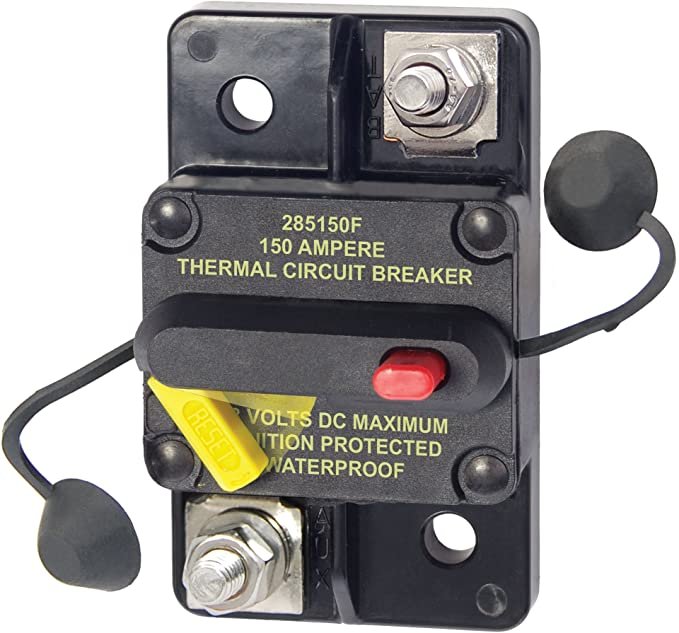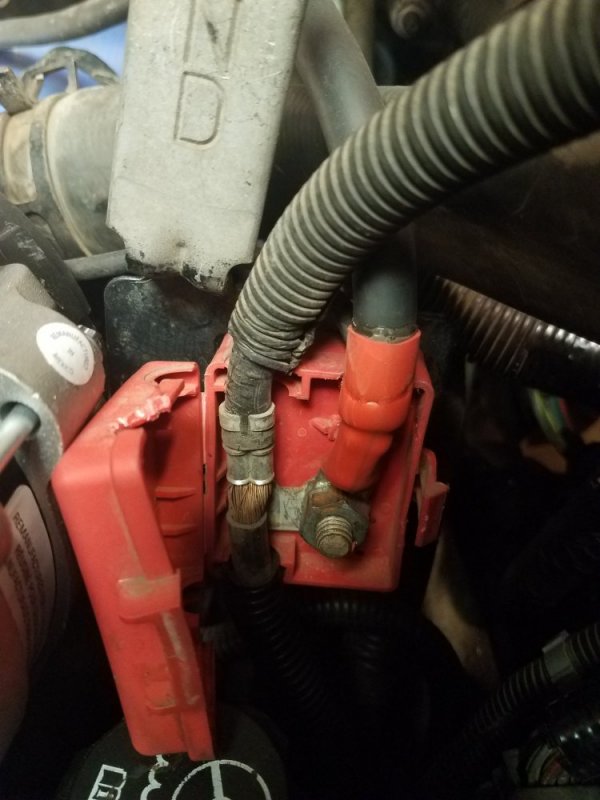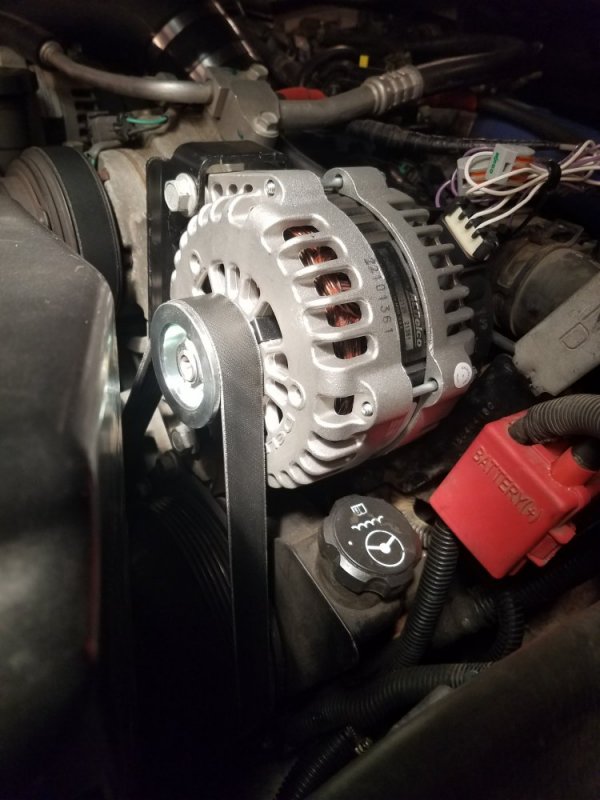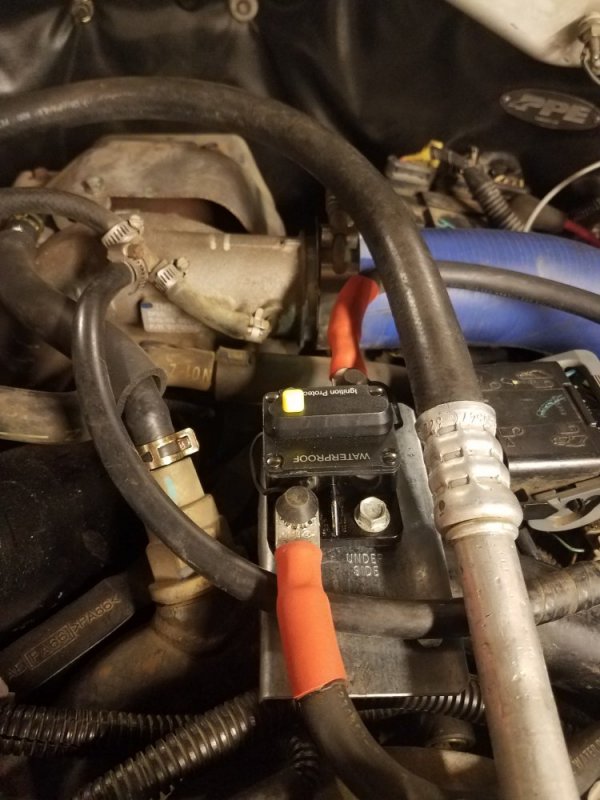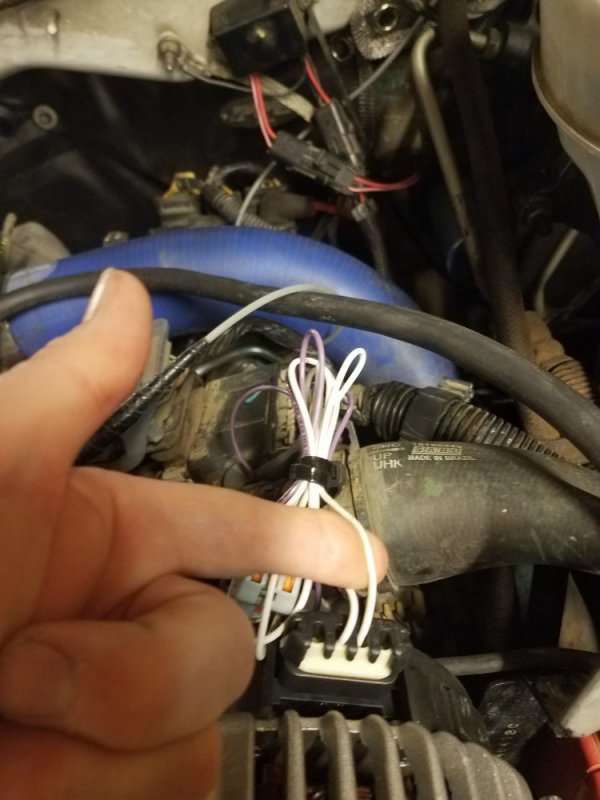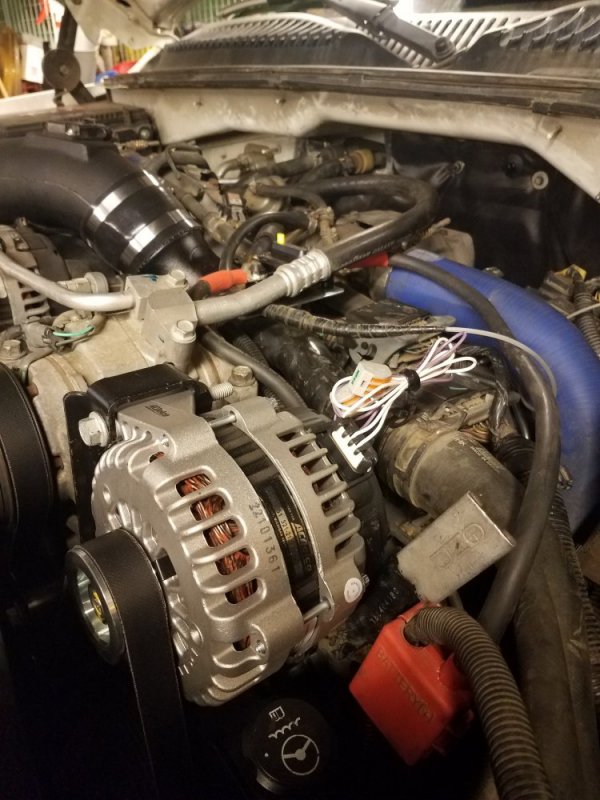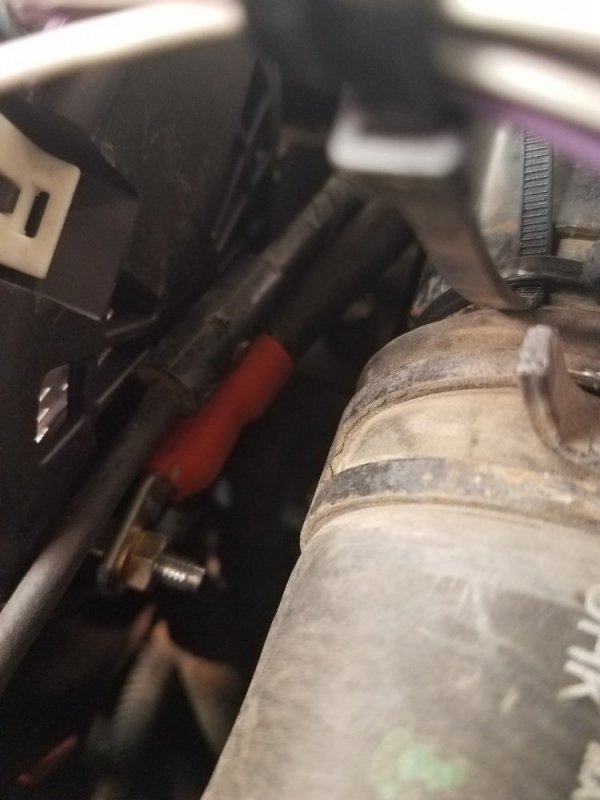wirewrangler
Electron coaxer
Hi Everybody!
Thought I'd post up what I found adding a second alternator to my truck for posterity I guess.
I recently added an alternator to my 2003 GMC Sierra 3500 and I only connected 1 wire from the driver side alternator to the ECM. I connected the third terminal over from the left (looking at it from the front of the truck and the same pin as the brown wire on the pass side alternator) to the Blue ECM connector Pin 32 with a piece of 18awg TFFN wire; it's what I had. If you wanted it to match what my sources tell me, make it a brown wire and judging by the size of the little crimps, it ought to be a 20awg or a 22awg, I'd go with 20...
When I fired it up, it started working. I know this because I unplugged the control from the passenger side alternator with the engine running - I got the battery light but the charging voltage was still at 14V on the gauge. I opened the circuit breaker on driver side alternator, and the voltage dropped on the gauge.
FWIW, I'm running dual 145 AC Delco Alternators. Bought the bracket, bolts, plug, and ECM terminals through GM Parts Prime or one similar. I bought a 150A circuit breaker off of amazon and wired the main through that where the pass alternator connects to the batteries in the little red flip open doo dad. I used #2 awg welding cable and crimps.
Below is what I bought and it all worked out with extra parts left over! I through a Goodyear 1061370 / 6PK3480 but it's squeaking / slipping and I need to find a better one. And keep in mind, I think if you're going to run dual 105A, the belt is a tad shorter.
Hope this helps anyone looking to do this.
Thought I'd post up what I found adding a second alternator to my truck for posterity I guess.
I recently added an alternator to my 2003 GMC Sierra 3500 and I only connected 1 wire from the driver side alternator to the ECM. I connected the third terminal over from the left (looking at it from the front of the truck and the same pin as the brown wire on the pass side alternator) to the Blue ECM connector Pin 32 with a piece of 18awg TFFN wire; it's what I had. If you wanted it to match what my sources tell me, make it a brown wire and judging by the size of the little crimps, it ought to be a 20awg or a 22awg, I'd go with 20...
When I fired it up, it started working. I know this because I unplugged the control from the passenger side alternator with the engine running - I got the battery light but the charging voltage was still at 14V on the gauge. I opened the circuit breaker on driver side alternator, and the voltage dropped on the gauge.
FWIW, I'm running dual 145 AC Delco Alternators. Bought the bracket, bolts, plug, and ECM terminals through GM Parts Prime or one similar. I bought a 150A circuit breaker off of amazon and wired the main through that where the pass alternator connects to the batteries in the little red flip open doo dad. I used #2 awg welding cable and crimps.
Below is what I bought and it all worked out with extra parts left over! I through a Goodyear 1061370 / 6PK3480 but it's squeaking / slipping and I need to find a better one. And keep in mind, I think if you're going to run dual 105A, the belt is a tad shorter.
Hope this helps anyone looking to do this.
11516360 | BOLT,A/C CMPR UPR FRT BRKT |
97356246 | BRACKET-GEN |
98057284 | PULLEY-DRV BELT IDLER |
11515769 | BOLT-METRIC HEAVY HEX FLANGE HEAD REDUCE |
15306329 | CONNECTOR-W/LEADS, 2-WAY F. *BEIGE *MATH DATA |
12084913 | TERMINAL,WRG FEMALE MIC/P 100/W(20-22 GA) |

